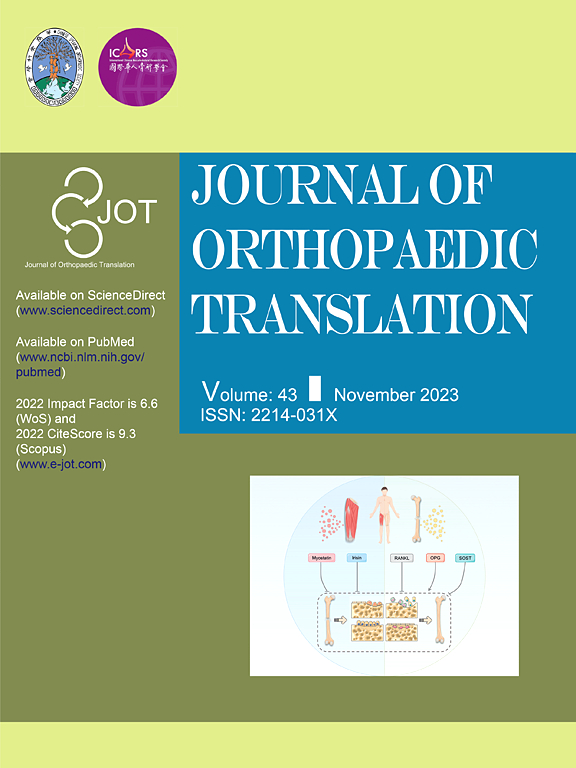Cracking the code: Understanding ESWT's role in bone fracture healing
IF 5.9
1区 医学
Q1 ORTHOPEDICS
引用次数: 0
Abstract
Bone non-union has always been a research hotspot in the field of orthopedics. Non-unions are often accompanied by symptoms such as pain, deformity, and dysfunction, which can significantly affect patients’ quality of life and cause related socioeconomic problems. Clinically, there are various treatments available for non-unions, and the main treatment methods are divided into surgical and non-surgical treatments. At present, surgery is the most widely used treatment for bone non-unions and has a high healing rate. However, even after surgery, some patients still face the problem of bone non-union. Furthermore, a small number of patients have surgical contraindications and could not tolerate surgery. Therefore, alternative treatments are needed to improve outcomes for patients with bone fractures. Extracorporeal shock wave therapy (ESWT) is a non-invasive treatment method with similar efficacy and better safety compared with surgery. Nevertheless, the exact mechanism for ESWT to treat patients with bone non-union are still not well understood. This article reviews the mechanisms of ESWT in promoting bone fracture healing by regulating osteoblasts and osteoclasts, providing a theoretical foundation for the clinical application of ESWT.
The Translational Potential of this Article: This review provides a comprehensive overview of the mechanisms underlying ESWT on promoting bone fracture healing by regulating osteoblasts and osteoclasts. The information provided in this article can offer a novel non-invasive method for clinicians to treat bone non-union.

破解密码:了解ESWT在骨折愈合中的作用
骨不连一直是骨科领域的研究热点。骨不连常伴有疼痛、畸形、功能障碍等症状,严重影响患者的生活质量,并引起相关的社会经济问题。临床上治疗骨不连的方法多种多样,主要治疗方法分为手术治疗和非手术治疗。手术是目前治疗骨不连最广泛的方法,具有较高的治愈率。然而,即使在手术后,一些患者仍然面临骨不愈合的问题。此外,少数患者有手术禁忌症,不能耐受手术。因此,需要替代治疗来改善骨折患者的预后。体外冲击波治疗(Extracorporeal shock wave therapy, ESWT)是一种非侵入性的治疗方法,与手术相比具有相似的疗效和更好的安全性。然而,ESWT治疗骨不连患者的确切机制仍不清楚。本文综述了ESWT通过调节成骨细胞和破骨细胞促进骨折愈合的机制,为ESWT的临床应用提供理论基础。本文的翻译潜力:本文综述了ESWT通过调节成骨细胞和破骨细胞促进骨折愈合的机制。本文提供的信息可以为临床医生治疗骨不连提供一种新的非侵入性方法。
本文章由计算机程序翻译,如有差异,请以英文原文为准。
求助全文
约1分钟内获得全文
求助全文
来源期刊

Journal of Orthopaedic Translation
Medicine-Orthopedics and Sports Medicine
CiteScore
11.80
自引率
13.60%
发文量
91
审稿时长
29 days
期刊介绍:
The Journal of Orthopaedic Translation (JOT) is the official peer-reviewed, open access journal of the Chinese Speaking Orthopaedic Society (CSOS) and the International Chinese Musculoskeletal Research Society (ICMRS). It is published quarterly, in January, April, July and October, by Elsevier.
 求助内容:
求助内容: 应助结果提醒方式:
应助结果提醒方式:


